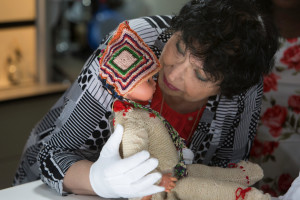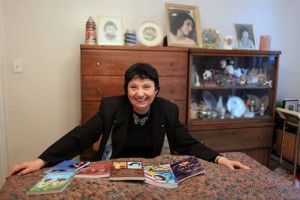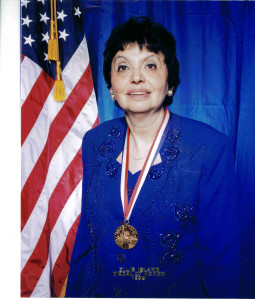After two years, Inge’s parents convinced the doctors to release Inge from the hospital. Because of her illness she was not allowed to attend school and had to enroll in a course of study for the homebound. Despite her schooling being disrupted so often, Inge was a highly committed student. At the age of fifteen she graduated from eighth grade and attended Bushwick High School in Brooklyn.
Determined to make up for the lost years of education, Inge delved into her studies and extracurricular activities. She excelled in her classes and was popular with the other students. Two achievements that Inge was most proud of was winning second prize in a city-wide science contest and first prize in an essay contest. She would continue to have many achievements in science and writing throughout her life.
Inge finished high school in three years and then entered Queens College as a Pre-Med student, but after six weeks she had to leave because of her worsening tuberculosis. She was prescribed an aggressive treatment regimen of all the medications available, which amounted to twenty-six pills and two injections every day. The treatment worked, though it would be a year before Inge could continue her studies and she still had to face the stigma of being a tuberculosis patient. Most painful of all, two boyfriends ended relationships with Inge when they learned about her history of tuberculosis.
Eventually Inge realized that pursuing medical school would be too physically demanding and instead majored in chemistry. After graduating from college, Inge had a long and successful career working as a chemist in various hospital laboratories.

For years Inge tried to forget what she had experienced as a child in Germany and Terezin, but in 1966 she decided it was time to confront her past and returned to Germany. She visited her mother’s hometown, and met some of the people she had known there. She also went to Kippenheim, where she found the Jewish cemetery neglected and the synagogue being used as a storage center for animal feed. In a very powerful scene, Inge returned to Terezin and recalled how it had been when she was imprisoned there.
At Terezin, Inge visited the cemetery and the crematorium, and she realized that she had an important responsibility to fight prejudice. To do so would be a way to honor all those innocent victims of the Nazis. And so Inge began to share her story through writing books and speaking to audiences all over the world.

Her books I Am a Star and Beyond the Yellow Star to America have won awards and have been translated into many languages. She has also appeared in several documentary films in which she shared her story. Inge has also received prestigious awards from the German government, such as the Federal Cross of Merit for her work in reconciliation.
I have summarized her story here, but of course Inge’s story is best told in her own words. I highly recommend I Am a Star and Beyond the Yellow Star to America to learn more about the story of Inge, a highly courageous woman who has dedicated her life to fighting prejudice and injustice.

Resources
Books by Inge Auerbacher (available on Amazon):
I Am a Star: Child of the Holocaust
Beyond the Yellow Star to America
Running Against the Wind
Finding Dr. Schatz: The Discovery of Streptomycin And a Life it Saved (Co-author Dr. Albert Schatz)
Highway To New York
Children of Terror (Co-author Bozenna Urbanowicz Gilbride)
www.ingeauerbacher.com
Wow, that photo of Inge at the US Holocaust Memorial, holding her childhood doll, gave me goosebumps that won’t go away! What an incredible woman to confront and cope with her past, with such grace and creativity.
The story of Inge’s doll Marlene is also pretty remarkable, due to space issues I unfortunately was unable to include it. In her book, Inge relates how she arrived at Terezin clutching her doll, which the soldiers had let her keep. The doll survived Terezin and after many years Inge donated Marlene to the US Holocaust Memorial Museum.
I too am amazed at how Inge made the decision to confront her past and all she has done to work for tolerance and reconciliation.